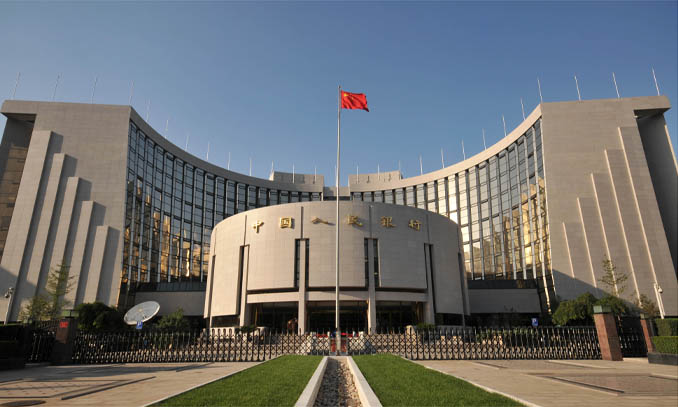
PBC
The People's Bank of China (PBC), the country's central bank, on Monday added liquidity to the banking system through its medium-term lending facility (MLF) and reverse repos, while keeping the interest rate unchanged as was widely expected.
The move sent a signal that the country will maintain its priority of stabilizing growth and expectations, by supporting the economic recovery that has picked up since China eased its COVID-related measures, economists said.
The PBC injected 125 billion yuan ($17.93 billion) into the market through a one-year MLF with an interest rate of 2.75 percent on Monday. The maturity amount came in at 100 billion yuan, which means that the central bank has injected a fresh 25 billion yuan this month, continuing the upward trend for the sixth consecutive month.
The operation, which aims to maintain reasonably ample banking system liquidity, will fully meet financial institutions' needs, the PBC said in a statement on its website.
The MLF tool helps commercial and policy banks maintain liquidity by allowing them to borrow from the central bank, using securities as collateral.
The central bank also conducted seven-day reverse repos worth 2 billion yuan at an interest rate of 2 percent.
A reverse repo is a process in which the central bank purchases securities from commercial banks through bidding, with an agreement to sell them back in the future.
It is unnecessary for the central bank to cut the benchmark policy rate at the moment, as market interest rates have been trending low recently and the domestic economy has been gradually bouncing back since the start of the year, according to Wang Qing, chief macroeconomic analyst at Golden Credit Rating International.
Zhou Maohua, an economist at Everbright Bank, told the Global Times on Monday that the MLF operation signaled that the central bank will continue to implement a steady and slightly loose monetary policy, guiding financial institutions to boost the real economy through support for small and micro enterprises. This will bolster the economic recovery and stabilize market expectations.
Zhou disputed claims in the Western media that the momentum of China's economic recovery is cooling, based on recently released indicators including the consumer price index (CPI) and credit data.
China's CPI rose 0.1 percent in April year-on-year, the slowest since early 2021, while on a month-on-month basis, prices declined by 0.1 percent.
Separately, new bank loans tumbled more sharply than expected in April, registering 718.8 billion yuan, data from the PBC showed on Thursday. Household loans contracted by 241.1 billion yuan last month, compared with 1.24 trillion yuan in March, while corporate loans slid to 683.9 billion yuan in April from 2.7 trillion yuan in the previous month.
"Even though those indicators suggest the rebound pace of domestic consumption and the housing market has slowed down a bit, the overall trend of robust domestic recovery has not changed," Zhou stressed.
Given the economic data released since the start of the year, data for a single month cannot disrupt the overall trend of recovery, he added.
GDP grew by 4.5 percent in the first quarter on a yearly basis, beating expectations.
At a meeting of the Political Bureau of the Communist Party of China Central Committee to analyze the current economic situation and economic work on April 28, the Chinese leadership fully recognized the achievement, saying China's economy and society have fully resumed normal operations.
The meeting also noted that the economy is still recovering, and there are new headwinds in economic transformation and upgrading.
China is scheduled to publish its key economic data for April on Tuesday including industrial production, retail sales and fixed-asset investment, which are likely to show rapid year-on-year growth and a gathering pace compared with March, experts forecast.




